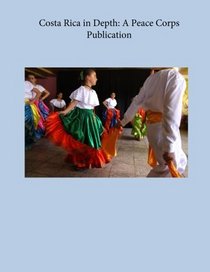Search -
Costa Rica in Depth: A Peace Corps Publication
Costa Rica in Depth A Peace Corps Publication
Author:
While there is debate about the number of indigenous people in Costa Rica prior to the arrival of Christopher Columbus in 1502, few survived contact with Europeans. Today, the country?s indigenous population makes up less than 2 percent of the total population. For nearly three centuries, Spain administered what is now Costa Rica as part of the ... more »
Author:
While there is debate about the number of indigenous people in Costa Rica prior to the arrival of Christopher Columbus in 1502, few survived contact with Europeans. Today, the country?s indigenous population makes up less than 2 percent of the total population. For nearly three centuries, Spain administered what is now Costa Rica as part of the ... more »
ISBN-13: 9781502348098
ISBN-10: 1502348098
Publication Date: 9/12/2014
Pages: 46
Rating: ?
ISBN-10: 1502348098
Publication Date: 9/12/2014
Pages: 46
Rating: ?
0 stars, based on 0 rating
Publisher: CreateSpace Independent Publishing Platform
Book Type: Paperback
Members Wishing: 1
Reviews: Amazon | Write a Review
Book Type: Paperback
Members Wishing: 1
Reviews: Amazon | Write a Review
Genres:
- Travel >> Latin America >> Central America >> Costa Rica




